Papers by Esther Breithoff
The Routledge Handbook of Sensory Archaeology, 2019
International Journal of Heritage Studies, 2020
Esther Breithoff and Rodney Harrison (2020) "Making Futures in End Times: Nature Conservation in the Anthropocene". In Deterritorializing the Future: Heritage in, of and after the Anthropocene, edited by Rodney Harrison and Colin Sterling (Open Humanities Press, London), pp 155-187, 2020
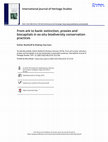
This paper takes a critical approach to understanding the social and cultural ‘work’ of natural h... more This paper takes a critical approach to understanding the social and cultural ‘work’ of natural heritage conservation, focussing specifically on ex-situ biodiversity cryopreservation practices. Drawing on ethnographic fieldwork with the Frozen Ark, a UK-based ‘frozen zoo’ aiming to preserve the DNA of endangered animal species, the paper situates the development of non-human animal biobanks in relation to current anxieties regarding the anticipated loss of biodiversity. These developments are seeding new global futures by driving advances in technologies, techniques and practices of cloning, de-extinction, re-wilding and potential species re-introduction. While this provides impetus to rethink the nature of ‘nature’ itself, as something which is actively made by such conservation practices, we also aim to make a contribution to the development of a series of critical concepts for analysis of ex-situ and in-situ natural heritage preservation practices, which further illuminates their roles in building distinctive futures, through discussion of the relationship between conservation proxies, biobanking and biocapitals. We suggest that questions of value and the role of future making in relation to heritage cannot be disassociated from an analysis of economic issues, and, therefore, the paper is framed within a broader discussion of the place of ex-situ biodiversity cryopreservation in the late capitalist global economy.
Photo couverture : Vue du tumulus romain du bill avant restauration (ben muller)
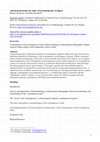
Annual Review of Anthropology, 2017
Archaeologists have long been interested in contemporary material culture, but only recently has ... more Archaeologists have long been interested in contemporary material culture, but only recently has a dedicated subfield of archaeology of the contemporary world begun to emerge. Whilst concerned mainly with the archaeology of the early to mid-twentieth and twenty-first centuries, in its explicit acknowledgement of the contemporary archaeological record as multi-temporal, it is not defined by a focus on a specific time period so much as a particular disposition towards time, material things, the archaeological process and its politics. This paper considers how the subfield might be characterised by its approaches to particular sources and its current and emerging thematic foci. A significant point of debate concerns the role of archaeology as a discipline through which to explore ongoing, contemporary socio-material practices—is archaeology purely concerned with the " abandoned " and the " ruined " , or can it also provide a means by which to engage with and illuminate ongoing, contemporary and future socio-material practices?
Books by Esther Breithoff

UCL Press, 2020
Conflict, Heritage and World-Making in the Chaco documents and interprets the physical remains an... more Conflict, Heritage and World-Making in the Chaco documents and interprets the physical remains and afterlives of the Chaco War (1932-35) – known as South America’s first ‘modern’ armed conflict – in what is now present-day Paraguay. It focuses not only on archaeological remains as conventionally understood, but takes an ontological approach to heterogeneous assemblages of objects, texts, practices and landscapes shaped by industrial war and people’s past and present engagements with them. These assemblages could be understood to constitute a ‘dark heritage’, the debris of a failed modernity. Yet it is clear that they are not simply dead memorials to this bloody war, but have been, and continue to be active in making, unmaking and remaking worlds – both for the participants and spectators of the war itself, as well as those who continue to occupy and live amongst the vast accretions of war matériel which persist in the present.
Framing the study as an exploration of modern, industrialised warfare as Anthropocene ‘hyperobject’ (Morton 2013), this book shows how the material culture and heritage of modern conflict fuse together objects, people and landscapes, connecting them physically and conceptually across vast, almost unimaginable distances and time periods. It offers a unique perspective on the heritage of conflict, the natural environment, practices of recycling, the concept of time, and the idea of the ‘Anthropocene’ itself, as seen through the lens of the material legacies of war, which remain firmly and stubbornly embedded in the present and which continue to actively shape the future.
This book makes a major contribution to key debates in anthropology, archaeology, environmental humanities, critical heritage and material culture studies on the significance of conflict in understanding the Anthropocene, and the roles played by its persistent heritages in assembling worlds.

UCL Press, 2020
Preservation of natural and cultural heritage is often said to be something that is done for the ... more Preservation of natural and cultural heritage is often said to be something that is done for the future, or on behalf of future generations, but the precise relationship of such practices to the future is rarely reflected upon. Heritage Futures draws on research undertaken over four years by an interdisciplinary, international team of 16 researchers and more than 25 partner organisations to explore the role of heritage and heritage-like practices in building future worlds.
Engaging broad themes such as diversity, transformation, profusion and uncertainty, Heritage Futures aims to understand how a range of conservation and preservation practices across a number of countries assemble and resource different kinds of futures, and the possibilities that emerge from such collaborative research for alternative approaches to heritage in the Anthropocene. Case studies include the cryopreservation of endangered DNA in frozen zoos, nuclear waste management, seed biobanking, landscape rewilding, social history collecting, space messaging, endangered language documentation, built and natural heritage management, domestic keeping and discarding practices, and world heritage site management.
Book reviews by Esther Breithoff


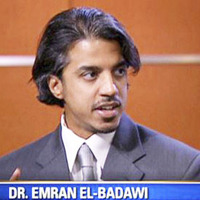
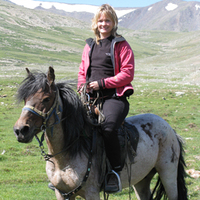
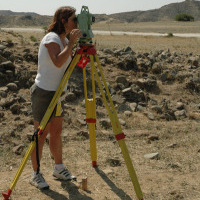
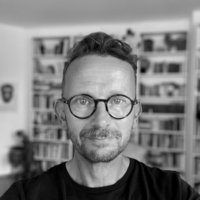


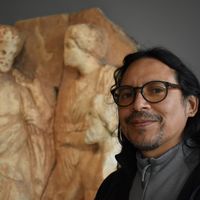

Uploads
Papers by Esther Breithoff
Books by Esther Breithoff
Framing the study as an exploration of modern, industrialised warfare as Anthropocene ‘hyperobject’ (Morton 2013), this book shows how the material culture and heritage of modern conflict fuse together objects, people and landscapes, connecting them physically and conceptually across vast, almost unimaginable distances and time periods. It offers a unique perspective on the heritage of conflict, the natural environment, practices of recycling, the concept of time, and the idea of the ‘Anthropocene’ itself, as seen through the lens of the material legacies of war, which remain firmly and stubbornly embedded in the present and which continue to actively shape the future.
This book makes a major contribution to key debates in anthropology, archaeology, environmental humanities, critical heritage and material culture studies on the significance of conflict in understanding the Anthropocene, and the roles played by its persistent heritages in assembling worlds.
Engaging broad themes such as diversity, transformation, profusion and uncertainty, Heritage Futures aims to understand how a range of conservation and preservation practices across a number of countries assemble and resource different kinds of futures, and the possibilities that emerge from such collaborative research for alternative approaches to heritage in the Anthropocene. Case studies include the cryopreservation of endangered DNA in frozen zoos, nuclear waste management, seed biobanking, landscape rewilding, social history collecting, space messaging, endangered language documentation, built and natural heritage management, domestic keeping and discarding practices, and world heritage site management.
Book reviews by Esther Breithoff
Framing the study as an exploration of modern, industrialised warfare as Anthropocene ‘hyperobject’ (Morton 2013), this book shows how the material culture and heritage of modern conflict fuse together objects, people and landscapes, connecting them physically and conceptually across vast, almost unimaginable distances and time periods. It offers a unique perspective on the heritage of conflict, the natural environment, practices of recycling, the concept of time, and the idea of the ‘Anthropocene’ itself, as seen through the lens of the material legacies of war, which remain firmly and stubbornly embedded in the present and which continue to actively shape the future.
This book makes a major contribution to key debates in anthropology, archaeology, environmental humanities, critical heritage and material culture studies on the significance of conflict in understanding the Anthropocene, and the roles played by its persistent heritages in assembling worlds.
Engaging broad themes such as diversity, transformation, profusion and uncertainty, Heritage Futures aims to understand how a range of conservation and preservation practices across a number of countries assemble and resource different kinds of futures, and the possibilities that emerge from such collaborative research for alternative approaches to heritage in the Anthropocene. Case studies include the cryopreservation of endangered DNA in frozen zoos, nuclear waste management, seed biobanking, landscape rewilding, social history collecting, space messaging, endangered language documentation, built and natural heritage management, domestic keeping and discarding practices, and world heritage site management.